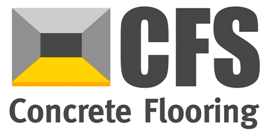Do I Need to Screed a Concrete Floor?
Understanding the difference between concrete and floor screeds can be difficult to those not familiar with the concrete flooring industry. We’re here to iron out some of the common misconceptions between concrete and floor screeds.
What is Screed?
Commonly confused with concrete, screed is different to concrete. Screed is a thinner layer of concrete which s typically poured over a base floor to help form a smooth floor coating to provide a strong foundation for the top floor.
Screed is Not Concrete
While the ‘chemistry’ between the two isn’t too dissimilar (the concrete creation process is almost identical) there are a few key differences that separate the two. The main differences are:
- The size of aggregates
- The grade of cement
- Mix consistency
- Cement finish
The biggest difference between the two is the intended use of the materials.
What’s the Difference Between Screed and Concrete?
The creation of concrete requires a coarser mixture in comparison to screed. Concrete needs harder, bigger aggregates in order to achieve extreme durability and longevity. The coarser mixture is what gives concrete its durable lifespan.
This is why concrete is the go-to for the vast majority of industrial areas across the UK. It remains the most popular man-made material in both the construction industry and the world.
Screed, by comparison, uses almost half the amount of aggregates used in cement, making the mix smoother. While is is not naturally as durable as concrete, this is not its primary purpose. Screed us commonly applied on top of concrete slabs, adding a finishing later to commercial and residential flooring. Screed flooring is typically used to top the concrete slabs so that carpet, tiles, wood flooring or resin top coatings can be applied.
Additionally, screed is also used to colour flooring. If screed is required in areas that see heavy traffic (commercial locations, such as restaurants, universities etc) then the screed will need to be harder to withstand the traffic.
Screed flooring is commonly used for internal purposes, such as covering heating and thermal insulation systems. They are an ideal alternative to concrete as they remain durable and their smooth enough to allow for additional flooring (carpet, wood etc).
The Different Types of Screed
Although screed can be created and mixed to fit specific requirements, generally speaking, there are four different types of screed.
Underfloor screed
Arguably the most common use for screed. This type of screed is poured over heating pipes as opposed to insulating material. The thinness of screed allows for good heat flow.
Floating screed
Similar to underfloor screed, floating screed is usually applied to a layer of insulation with a damp proof member over it (separating the insulation from the screed).
Bonded screed
This type of screed is bonded to the concrete using an extremely strong bonding agent or primer.
Unbonded screed
Typically applied to damp proof membranes to separate the final layer of screed from the concrete base.
Should I Screed My Floor?
If you’re looking to cover your underfloor heating and/or provide a solid, smooth foundation for your final floor, you should screed your floor. It’s also required if your current floor is uneven, as this could affect the structural integrity of the floor when/if the top floor layer is installed.
The Drying and Completion Process
The time is takes for screed to dry depends on various factors. Namely, the thickness of the screed applied and where it was laid. In any case, screed must be left for at least two days to set before it’s walked on. However, in some cases, the dying time can be shortened to just 16 hours, but only if certain additives are added.
If the area you have screed is going to be subjected to heavy foot traffic (or lifting and shifting), it’s strongly suggested you leave it for at least one week. If heavy pressure is applied during this time, the structural integrity of the floor may be jeopardised.
After one month, your screed floor will have reached its peek strength and you can resume normal activity.
Adding Final Floor to Screed
All cement forms (including screed) shrink as they dry or cure, which is why you should never lay your top floor until your screed has finished its shrinking process. To be on the safe side, we would recommend waiting at least one month before you apply for final floor. Early application could result in cracks and fissures in the top floor and this is costly to rectify.
Leveling Screed
Leveling screed is a simple process for an experience concrete contractor. The screed is poured over the selected area (over pipework if required) and then smoothed with a wooden float to level it. You can also select to use self-leveling floor screeds. This option if faster as the consistency is lighter and easier to spread.
Using Screed as a Final Flooring Finish
It’s not uncommon for people to choose a screed floor as their final floor finish. This is particularly common in commercial properties, such as universities, restaurants and shop floors. Screed has the potential to look smart and elegant, providing an appropriate finish to commercial areas.
Contact Us Today
If you need your floor screeded or you’d like to learn more about what we do here at CFS, why not give us a quick call? For all your concrete flooring inquiries, our team are here to help. From industrial to residential concrete flooring, there’s no job too big or small for our team.
